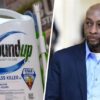Monsanto Anniston
Now in addition to all the general PCB hazards we’ve gone over, Monsanto had been dumping PCBs into the environment directly around their two plants for decades, as we saw in those Snow Creek experiments where the fish died so quickly. That was in the 1960s when it quickly became apparent to Monsanto just how serious the issue was.
Here’s the real problem though. The big warnings went off in the mid ’60s, and Monsanto even stopped PCB production at the Anniston plant in 1971 (although contamination persisted decades past that date). So guess when they warned the people of Anniston about the toxins in their creek? And by the way, it wasn’t just in their creek, because Monsanto had landfills right there filled with PCB waste as well, and other PCB jailbreaks around the area.
So when did Monsanto warn Anniston? Well, that answer is very simple. NEVER. Instead, for the entire 1970s… nothing. For the entire 1980s… zero. Then finally, in 1993, 27 years after they found out about the fish going belly up when placed in the water, a contractor found deformed fish in Choccolocco Creek and had the fish tested for PCBs. He gave those test results to regulators, and the results showed enough contamination to spur a state investigation. Then finally, on November 2, 1993, the Alabama Dept of Public Health issued the very first fish consumption advisory, warning the people of Anniston not to eat fish caught from that creek. Monsanto stayed silent for the entire time. Even though they were the ones doing the contamination, they never felt responsible to tell anyone… to say a word.
Eventually people in Anniston finally hit Monsanto with lawsuits, and in 2002, thanks in part to the court-obtained documents that I’ve referenced today, Anniston gave Monsanto a beatdown at trial. The legal grounds for the verdict were “negligence, wantonness, fraud, trespass, nuisance, and outrage,” and outrage is a term you don’t hear very often. It also included the following judgment of Monsanto’s conduct, which was deemed, and I quote:
“So outrageous in character and extreme in degree as to go beyond all possible bounds of decency, so as to be regarded as atrocious and utterly intolerable in civilized society.”
That’s one to remember for later…
Monsanto Lawsuits
Now in addition to all the incriminating documents, the attitude from some high-level Monsanto employees who gave testimony certainly didn’t help their case. Here are a couple of excerpts from the March 31, 1998 testimony of William Papageorge, whose name I saw several times in the court documents I reviewed.
The attorney asked him, “To your knowledge, sir, did Monsanto ever disclose to the residents of Anniston in 1968 or 1969 that twenty-seven pounds of organics and acid waste from
the Aroclor and HCl departments were being lost from the plant?”
He replied, “There was no reason to talk those numbers. They were meaningless,”
“But the answer is no?”
“That is correct.”
The attorney also asked, “Did anyone ever tell the residents of Anniston at that time that Monsanto was visually checking Snow Creek and Choccolocco Creek to determine the effects of the PCBs in the plant effluent water?”
He replied, “Sir, this is no different than a service station man telling his neighbors he has got motor oil on the curb by his service station. Those things are just nonproductive comments that one can make to others.”
And for the last question I’ll share, the counsel asked, “Did Monsanto ever provide the residents of Anniston with any data concerning the health hazards of PCBs in humans?”
Papageorge’s response – “Uh-uh (indicating no). Why would they?”
(court deposition)
So the people of Anniston, at least those involved in that exact suit (because there were more), scored a decisive victory in court. But 3 weeks later, while details of compensation were still being worked out in court, the EPA and Monsanto reached a consent decree. As a State Regulator testified during the trial, EPA officials anticipated that a consent decree would preempt the State Court cleanup ruling. Now those consent decree negotiations started in January 2001, but they were finished 3 weeks AFTER the court case was decided. In excerpts from a Senate Subcommittee Hearing that took place shortly after, the following was revealed:
“The record shows EPA cut corners, ignored its own standards and had several last-minute closed-door meetings with Monsanto so that the decision could be filed before the court finished its proceedings. The decree was signed by Monsanto on March 19 and they filed a petition to dismiss the claims of 3,500 plaintiffs on March 22nd, 3 days before the decree was lodged. In fact, Judge Laird had to subpoena the decree to make it public.”
A bit further in, we learn that “EPA documents show that EPA regional staff did not feel that this final decision would pass muster with national standards.” And in a letter to Monsanto’s attorney in September 2001, the EPA wrote that “the form of the consent decree is such a significant deviation from the models that we may not be able to get it approved in the current form.”
And the day after the consent decree was announced by the EPA, its regional officials even commented that the “timing of everything has been strange.”
Monsanto then informed shareholders that their cleanup cost wouldn’t be any higher than the normal range of $30 to $40 million, would be nowhere near the estimated costs coming out of the trial, and much less than the $460 million the EPA had negotiated to clean up the Hudson River, which by the way had a TENTH of the PCB contamination present in Anniston.
Now the Anniston situation wasn’t resolved just by that trial and consent decree, because there were more lawsuits, including a huge class action that involved Johnnie Cochran, but, that’s enough here! I knew we had a lot of digging to do on this project, but I am blown away at the level to which things sunk for Monsanto in regards to the PCBs that they created.
Now next week I’ll tie this tragic PCB story in with Agent Orange, and briefly discuss DDT as well, at which point it will become crystal clear as to why we’re even digging into this stuff in the first place. Because in its own way, this is a very important piece to the GMO puzzle. And it’s one that, as we empower everyone who connects with The Walk a Mile Project to help get the truth out there, will become a huge philosophical stepping stone.
So next week, we’ll have a really solid, core answer to that big question of why – WHY do we need to even dive into this GMO situation?
** Click here to check out our GMO TRUTH PODCAST #2 and listen to everything in this post, plus a whole bunch more…






